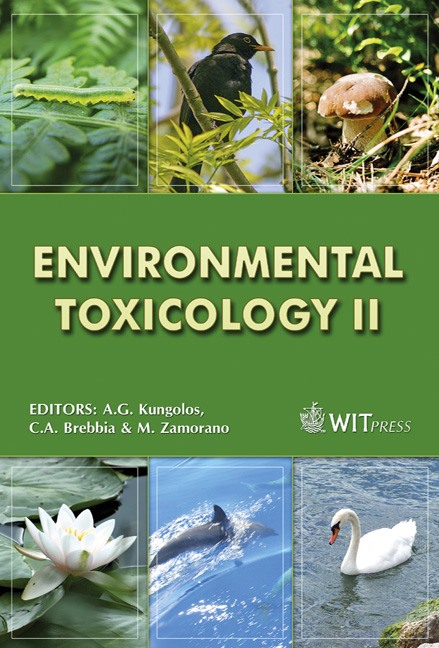Toxicity Of Nonionic Surfactants
Price
Free (open access)
Transaction
Volume
110
Pages
10
Page Range
281 - 290
Published
2008
Size
349 kb
Paper DOI
10.2495/ETOX080301
Copyright
WIT Press
Author(s)
K. Jahan, S. Balzer & P. Mosto
Abstract
Nonionic surfactants are amphilic chemicals that enhance desorption and bioavailability by increasing solubility and dispersion of poorly soluble hydrocarbons and oils. This study was conducted to determine the toxicity of commercial nonionic surfactants by using the Microtox® Acute Toxicity test which is a rapid, simple test for toxicity. The test uses the luminescent bacterium V. fischeri as the test organism. Five common commercial nonionic surfactants Tergitol NP-10, Triton X-100, Igepal 630, Brij 35 and Tween 40 were used in the study. Light readings were taken initially as well as at 0 minutes, 5 minutes and 10 minutes to see how the toxicity of each surfactant changed with time. Experiments were conducted to determine the five-minute EC50 values. EC50 is the effective concentration that causes a 50% decrease in light output in a 5-minute exposure period. A higher effective concentration is interpreted as a lower toxicity. The critical toxic concentration (CTC) was also determined. Toxicity of the surfactants varied according to their difference in chemical structures and branching. EC50 values were less than the CTC and CMC values of all select surfactants. Higher toxicity was shown by surfactant solutions that contained a benzene ring in comparison to the others. Keywords: nonionic, surfactants, microtox, critical toxic concentration.
Keywords
nonionic, surfactants, microtox, critical toxic concentration.





